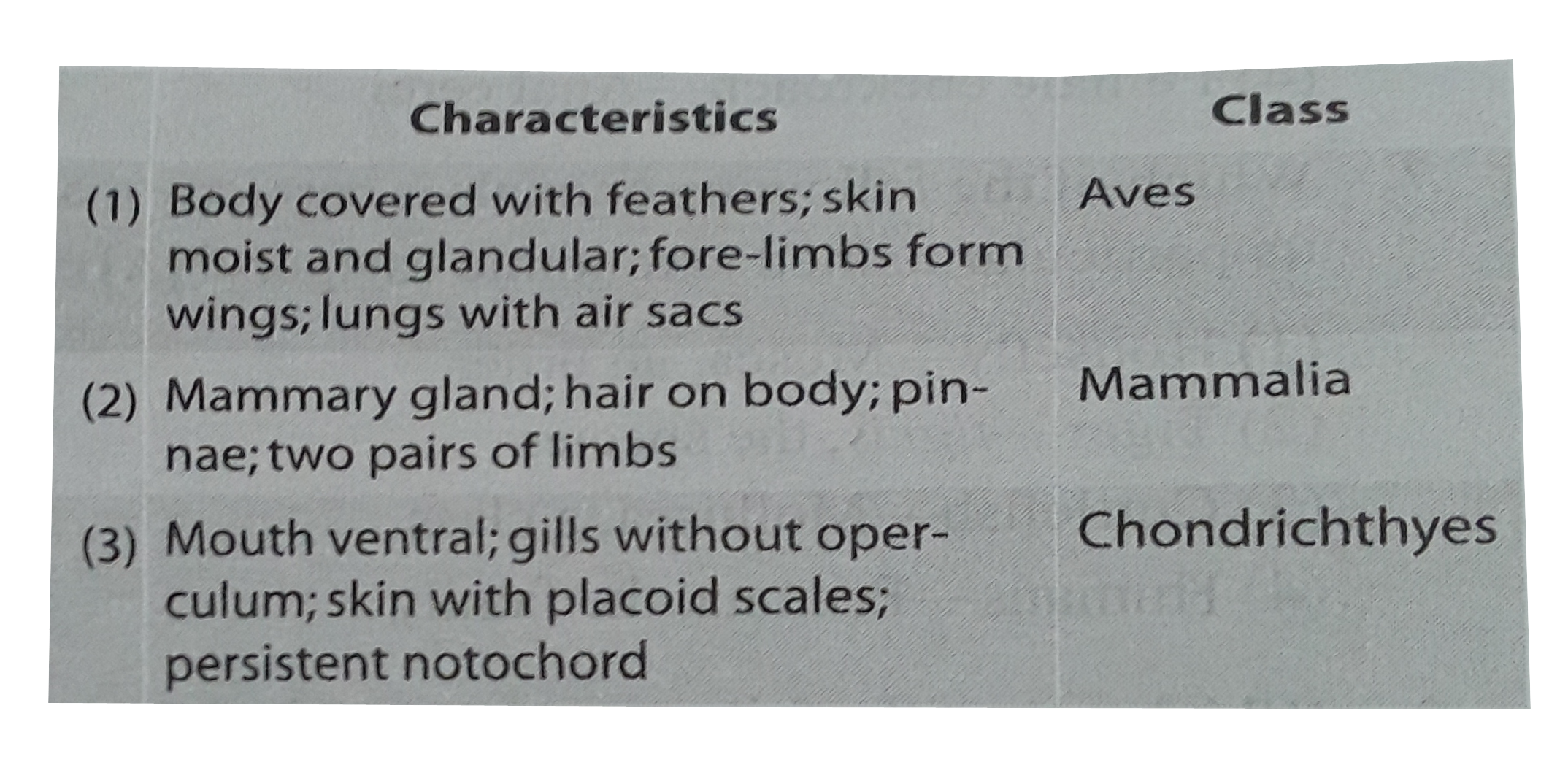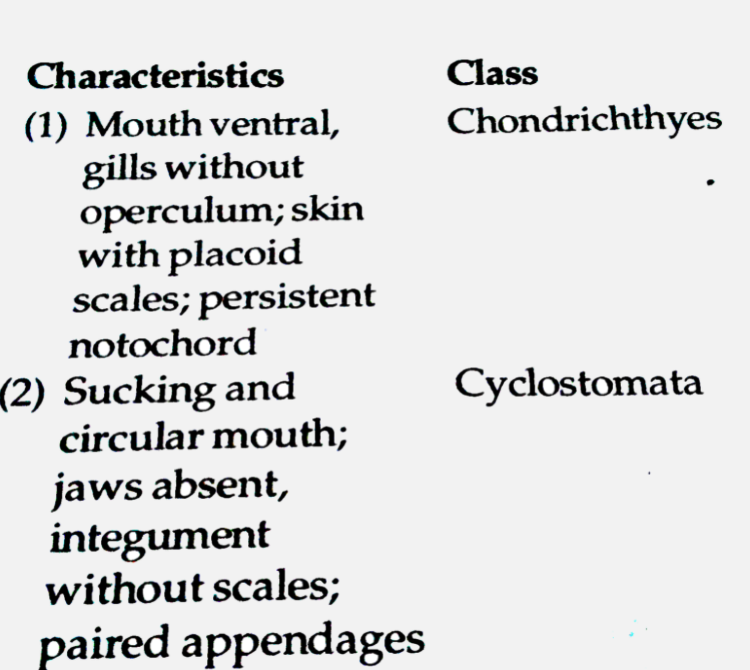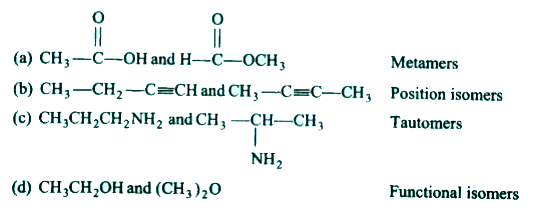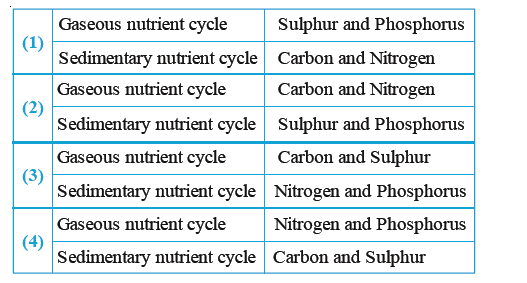Which of the following represents the correct combination without any exception?
Characteristics -Fore limbs modified into wings, partially ossified endoskeleton, moist and glandular skin, Taxon-Aves
Characteristics- Acoelomate organism, bilateral symmetry, complete digestive system, Taxon-Aschelminthes
Characteristics - Tetrapod in adult, presence of post anal tail, moist and glandular skin , Taxon- Amphibia
Characteristics - Presence of mammary glands, body hair is present at some point of development internal fertilisation, Taxon-Mammals
To solve the question of identifying the correct combination without any exceptions among the taxonomic groups provided, we will analyze each option step by step.
1. Analyze Aves (Birds):
- Forelimbs modified into wings: Correct. Birds have adapted forelimbs for flight.
- Partially ossified endoskeleton: Correct. This adaptation helps reduce body weight for flight.
- Moist and glandular skin: Incorrect. Birds have dry skin with only one gland at the base of their tail.
- Conclusion: Aves has an exception.
2. Analyze Aeschylmynthus (Roundworms):
- Coelomate: Incorrect. Aeschylmynthus (roundworms) are pseudocoelomate, not coelomate.
- Bilateral symmetry: Correct. Roundworms exhibit bilateral symmetry.
- Complete digestive system: Correct. They have a complete digestive tract.
- Conclusion: Aeschylmynthus has an exception.
3. Analyze Amphibia (Amphibians):
- Tetrapod in adult: Generally correct, but not all amphibians have limbs (e.g., some limbless amphibians).
- Presence of post-anal tail: Correct. This is a characteristic of all chordates, including amphibians.
- Moist and glandular skin: Correct. Amphibians have moist skin.
- Conclusion: Amphibia has an exception due to limbless forms.
4. Analyze Mammalia (Mammals):
- Mammary glands: Correct. A defining feature of female mammals.
- Body hair: Correct. Present at some stage of development, even if reduced in adults like whales.
- Internal fertilization: Correct. Mammals typically exhibit internal fertilization.
- Conclusion: Mammalia does not have any exceptions.
Final Conclusion:
The only taxonomic group that does not have any exceptions in the characteristics provided is Mammalia. Therefore, the correct answer is option D (Mammals).
- Forelimbs modified into wings: Correct. Birds have adapted forelimbs for flight.
- Partially ossified endoskeleton: Correct. This adaptation helps reduce body weight for flight.
- Moist and glandular skin: Incorrect. Birds have dry skin with only one gland at the base of their tail.
- Conclusion: Aves has an exception.
- Coelomate: Incorrect. Aeschylmynthus (roundworms) are pseudocoelomate, not coelomate.
- Bilateral symmetry: Correct. Roundworms exhibit bilateral symmetry.
- Complete digestive system: Correct. They have a complete digestive tract.
- Conclusion: Aeschylmynthus has an exception.
- Tetrapod in adult: Generally correct, but not all amphibians have limbs (e.g., some limbless amphibians).
- Presence of post-anal tail: Correct. This is a characteristic of all chordates, including amphibians.
- Moist and glandular skin: Correct. Amphibians have moist skin.
- Conclusion: Amphibia has an exception due to limbless forms.
- Mammary glands: Correct. A defining feature of female mammals.
- Body hair: Correct. Present at some stage of development, even if reduced in adults like whales.
- Internal fertilization: Correct. Mammals typically exhibit internal fertilization.
- Conclusion: Mammalia does not have any exceptions.
The only taxonomic group that does not have any exceptions in the characteristics provided is Mammalia. Therefore, the correct answer is option D (Mammals).
Topper's Solved these Questions
Similar Questions
Which of the following represent the correct combination without
any exception ?


View SolutionWhich of the following represents the cor- rect combination without any exception?


View SolutionWhich of the following represent correct matching?

View SolutionWhich of the following represents the correct order of acidity?
View SolutionIn which of the following both pairs have correct combination
View SolutionWhich of the following options represents the correct bond order ?
View SolutionWhich of the following does not represent the correct reaction?
View SolutionIn which of the following both pairs have correct combination ?
View SolutionIn which of the following both pairs have correct combination ?

View SolutionWhich of the following is not represented in correct unit
View Solution
